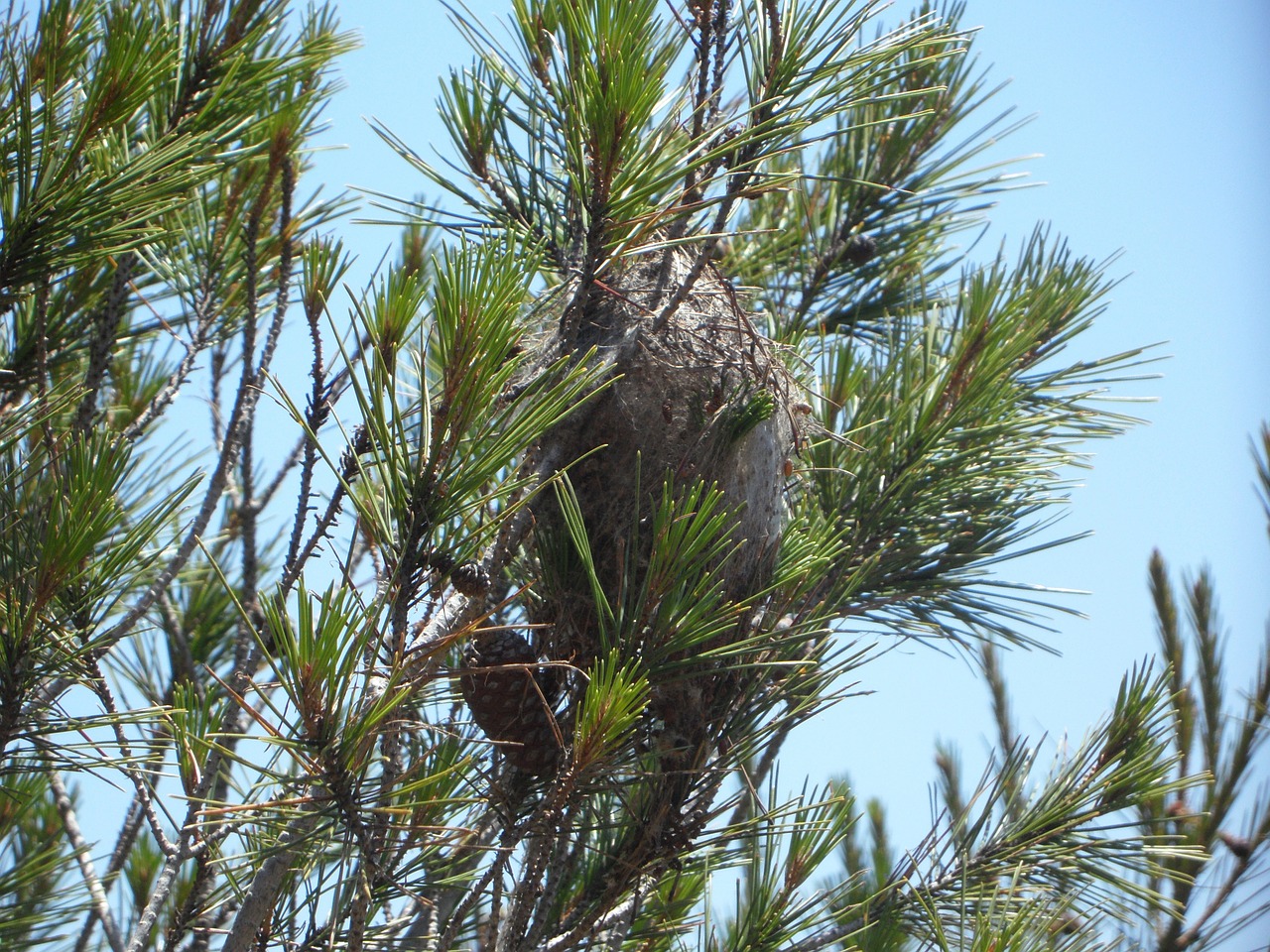Lots of little webs start appearing in pine trees over winter; sometimes they will even be in cedar or larch. They look like clumps of spiders’ webs but in fact they herald the approaching processionary caterpillar season.
What are Processionary Caterpillars and how to identify them?
The caterpillars are hairy and orange-brown coloured with blue bands around their body usually 3 – 4 cm in length. They move about in nose-to-tail processions on the trees or on the ground beneath the trees in winter and early spring.

When should you expect to see Processionary Caterpillars?
Between December and April, the larvae make their way to the floor in order to pupate and reappear as moths, usually between May and July.
Why should you be careful with Processionary Caterpillars?
The caterpillars are coated in barbed hairs that the caterpillar can propel when threatened. The hairs contain a protein called thaumetopoein which can cause skin irritation, breathing problems, fevers, and eye and throat irritation in mild cases. In the most severe cases, they can set off a major allergic reaction, known as anaphylactic shock, which can be fatal.
These symptoms are not exclusive to humans and dogs are very prone reactions to the hairs too. Dogs going near these creatures or just picking up hairs from smelling the ground can trigger fatal reactions. The loose hairs are highly toxic as they can get caught in dog’s paws. When cleaning, the dog will transfer the hairs to their tongue that will lead to vomiting, swelling of the tongue and, potentially, suffocation.
We recommend you contact your veterinary care provider as soon as possible if you believe your dog has been exposed to either the hairs or the caterpillar itself.
I’ve found a Processionary Caterpillar nest; what should I do?

The team from Leñas Lanjarón are our recommended ‘go-to guys’ for this issue. You can contact them by phoning/WhatsApp +34 695 39 86 79 or visit their Facebook page.
If you find nests or signs of processionary caterpillars in your area you should contact your local authorities or a find removal expert immediately. Do not attempt to cut down the nests or burn them yourself. If the hairs become airborne, they can cause respiratory difficulties or a serious allergic reaction. Even if the nest is empty the hairs from the caterpillars still pose danger and must be removed by a professional.

